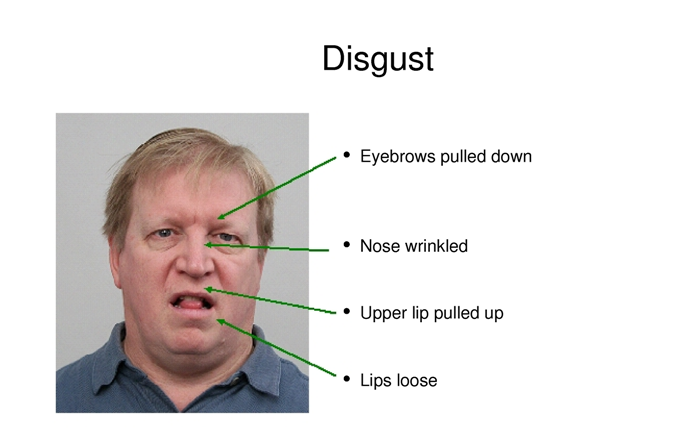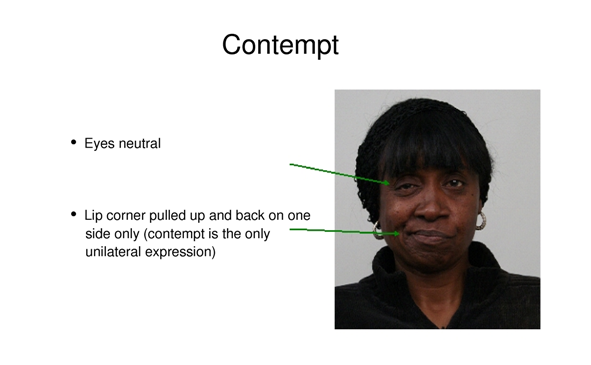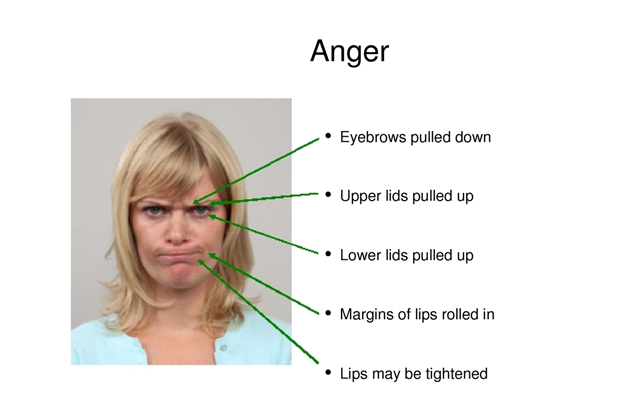 As may be unsurprising to many of you, reading basic emotions in others may be a key to predicting violence.
As may be unsurprising to many of you, reading basic emotions in others may be a key to predicting violence.
Humintell has written for years on the importance of basic emotions, but can understanding these emotions help better understand or predict violent behavior?
Drs. David Matsumoto, Hyi Sung Hwang, and Mark Frank all agree with a resounding “yes” in a blog article written for the Federal Bureau of Investigation.
Their observations ring true as an important explication of how fundamental our basic emotions can be.
Different emotions can mean categorically different things. For instance, contempt, disgust, and anger all refer to feelings of emotion towards an out-group, but they mean different things. Anger is usually channeled at somebody’s actions, while disgust and contempt are focused on the other person themselves.
Violent Emotion Examples
 1. Disgust
1. Disgust
They proceed to elaborate on the role that disgust can have in predicting violence. Disgust, they write, results in the desire to eliminate the disgusting object.
Certainly, this can have horrifying consequences when applied to other people, and they point to genocidal leaders, terrorists, and mass shooters as consistently evincing disgust in public speeches or videos.
 2. Contempt
2. Contempt
Contempt is a similar phenomenon as disgust, in that it focuses on another’s actions as they relate to status and hierarchy. That person is often seen as not fitting the status that they claim. This is a different sort of emotion, but it also leads to a disposition against the individual not just their actions.
 3. Anger
3. Anger
Anger is often seen as an important predictor of violence, but given the context of terrorism and genocide, disgust may be the particularly salient emotion. That said, anger can easily be turned into disgust. Since anger is focused on a given situation or action, its conversion to disgust can involve a larger shift in attitude from a specific instance to a more general disposition towards an out-group.
Still, while disgust and contempt are being emphasized, anger has a crucial role here too. It is through anger that the hesitation against action is overcome.
While an individual may be motivated to violence through disgust or contempt, it is through anger that they actually make this decision to act rather than to refrain.
This is all the case at a very physiological level as well. We act out of anger because anger increases our heart rate and blood flow. Similarly, disgust is a deep-seated emotion born out of our concerns for parasites and the need to ensure the safety of food and water.
It may be helpful to see these relationships more simply. Contempt and disgust lead to the breakdown of relations between groups or individuals, and anger leads to those same individuals actually acting on such hostility.
This underscores the need to be able to not just detect anger but to read people’s emotions more broadly.
Your use of facial displays of emotional to predict violence only accounts for reactive limbic system motivation to violence and ignores the much more dangerous planned and purposeful violence under the principal control of the neocortical conscious brain. In these instances there is a paradoxical lack of emotion and accompanying facial displays as the emotional influence of the limbic system is shut down and the violence becomes a task. Much greater harm is accomplished by the deliberative and planned actors, who are immune to deescalation, than by reactive unplanned violence which can be deescalated.
Peter DiSomenuca is spot on!
Hey Peter so good to hear from you. I hope you are well. With regard to the blog to which you commented, in our actual research we have actually distinguished between two different expressions, one that corresponds to affective or reactive violence and a different one that corresponds to the premeditated, instrumental type of violence you mention in your comment. So our research actually tracks and finds that distinction in faces. Here’s the reference in case you’re interested:
http://davidmatsumoto.com/content/2014%20M%20and%20H%20JTAM.pdf
Hi David, I hope this message finds you well. With regard to actors of instrumental planned violence the research description of the facial expression as ”a low intensity, controlled expression of anger that displays the look of determination and concentration,” I believe is precisely that of determination and concentration and that the emotion of anger is absent when actors carry out purposeful and planned acts of violence. I believe evolution has created a neural process to shut down emotional responses when time allows for planning violence as the precision of coordinated action under control of the prefrontal cortex is superior to an all purpose physiological response of anger., Also the emotional default setting in the vast majority of people is aversion to killing a fellow human being. The brain has learned, again through evolution, that when a higher order need requires killing another human, emotional responses interfere with caring out the task and are shut down through the neural activity, most likely by release of certain inhibitory neurotransmitters.